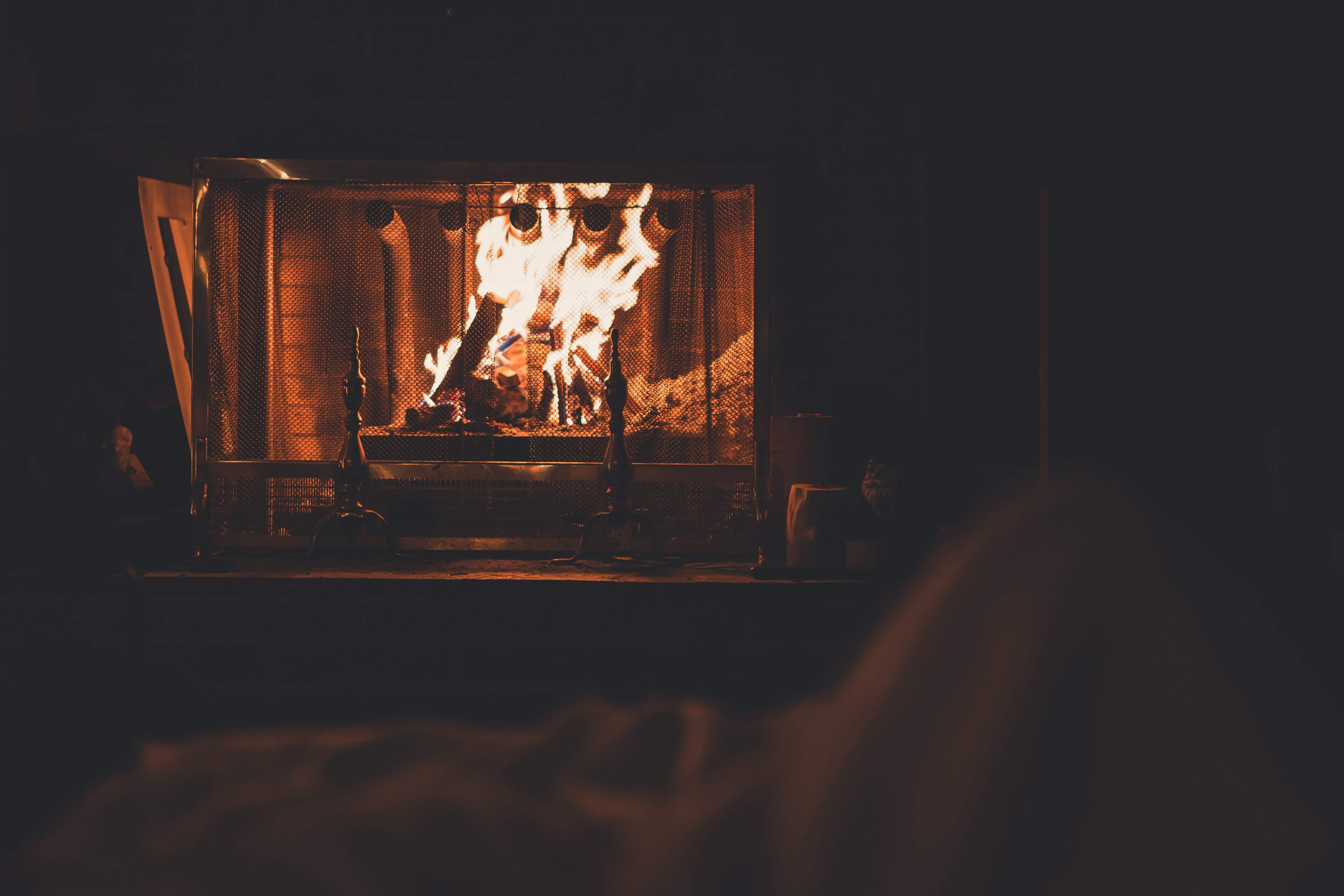How fireplaces could affect you
By Pima County Department of Environmental Quality (PDEQ)
One cool desert evening, Margaret clicked the leash on Cloe’s collar amid lots of tail wagging and excited body wiggles. They stepped outside for their evening walk and within moments, Margaret turned her dog around and headed back to the house. Wood-burning fireplaces can be a pleasant source of warmth and comfort when the air gets crisp, but for some people, fireplace smoke can make it hard for them to catch their breath.
Wood smoke contains tiny particles and toxic pollutants including benzene, formaldehyde and polycyclic aromatic hydrocarbons. These small particles pose the greatest health problems because they can bypass the body’s natural filters (nose hairs and mucous) and float down deep into our lungs. Some of the very small particles can even pass from your lungs into the bloodstream and be carried and deposited throughout the body.
Our lungs have tiny hair-like structures inside them called cilia that work to move debris and particles up and out of the lungs so we can cough them out. But if the cilia are damaged or overburdened from excessive exposure to particulates, they become less effective and particles can penetrate further into our lungs, making them nearly impossible to remove.
Particles from fireplace smoke can harm people with heart or respiratory disease, like Margaret. In addition, babies, young children and pregnant women are more sensitive to smoke in the air. Pollutants in wood smoke can cause the eyes, nose and throat to burn with irritation, and even cause headaches, nausea and acute bronchitis. Numerous health studies have linked exposure to particulate pollution to more serious health problems including premature death, nonfatal heart attacks, and decreased lung function.
Margaret’s decision to refrain from walking Cloe in her smoky neighborhood that night probably kept her from experiencing symptoms such as an irregular heartbeat, chest pain and shortness of breath. In homes where wood-burning fireplaces are frequently used, smoke can make asthma symptoms worse and cause lung inflammation and pneumonia in young children.
“From the calls we receive, I know it can be very challenging to breathe for people who have respiratory issues and also live near fireplace users—to the point that they cannot even take their dog on a walk,” explains Beth Gorman, senior program manager with Pima County Department of Environmental Quality (PDEQ).
During winter holidays, and when overcast skies limit smoke from rising, PDEQ staff notice spikes of air pollution at their monitors. On these days, smoke and other by-products of combustion sources make up much of the particulate matter in our air.
“You can watch particulate matter levels rise at our air quality monitoring sites during chilly evenings,” says Gorman.
Note the amount (value) of particulate matter on the left side of these graphs.
The graphs above show what particulate matter levels are like on a normal Tuesday in December (note the increases of pollution from our motor vehicles during the morning and evening commutes) compared to the following Tuesday, which was Christmas Day in 2018. The evening levels of particulate matter on Christmas night are more than three times the normal levels—and the most likely cause is fireplace smoke.
Fireplaces are not a very efficient way to heat your home. Most homes aren’t perfectly insulated, so cold air slips in under doors and through cracks, while hot air rises and escapes up the chimney. If flues are not properly installed and maintained, particles released during wood burning can escape into the home.
Watching the flicker of flames in your fireplace can be enjoyable, but instead of wood, consider placing multiple candles of differing heights in the firebox or on a candelabra. Another option is to retrofit the fireplace for a natural gas insert. This change improves air quality inside and outside your home, and eliminates the need to haul and stock wood and shovel ashes.
For those whose fireplace is their sole source of heat, and to reduce the risk of harm if you choose to use your wood-burning fireplace, PDEQ recommends following these tips:
- Have chimneys cleaned seasonally to reduce creosote buildup.
- Burn hardwoods like oak, mesquite and pecan instead of soft woods like cedar, fir or pine. The wood should be split and dried for at least six months. Never burn household trash, plastic, plywood, painted or pressure-treated wood.
- Use smaller pieces of wood. They burn more efficiently and are a better source of heat.
- Allow enough room inside the fireplace for air to circulate freely around the wood.
- Never burn plastics, painted wood, charcoal, or printed pages in a fireplace. They will release toxic materials into the air.
- Occasionally, check your chimney from the outside while the fire is going. If you see smoke, your fire is not burning hot enough. Give the fire more air and then check again.
- Check before you light a fire to see if local air pollution levels are elevated. If they are, avoid using the fireplace, if possible. Get current air pollution information at www.pima.gov/deq.
- Remember… If you can smell smoke, you are breathing smoke!
Cloe needs her exercise and Margaret needs to breathe. Being considerate of neighbors regarding fireplace use will help immensely. Follow the burn better tips if you are going to light it up. The Environmental Protection Agency provides other helpful “burn wise” information on their website.
Keep up with all of Green Living’s content by visiting our website.
Pima County Department of Environmental Quality (PDEQ) serves Pima County residents by protecting public health and the environment. PDEQ monitors air and water quality; provides hazardous and solid waste programs that ensures waste minimization and pollution prevention; assesses environmental compliance; processes environmental permits and plans; responds to public complaints and inquiries with investigations and enforcement; and engages with the community via public outreach, education, and citizens’ assistance. For more information, visit http://webcms.pima.gov/government/environmental_quality/.






